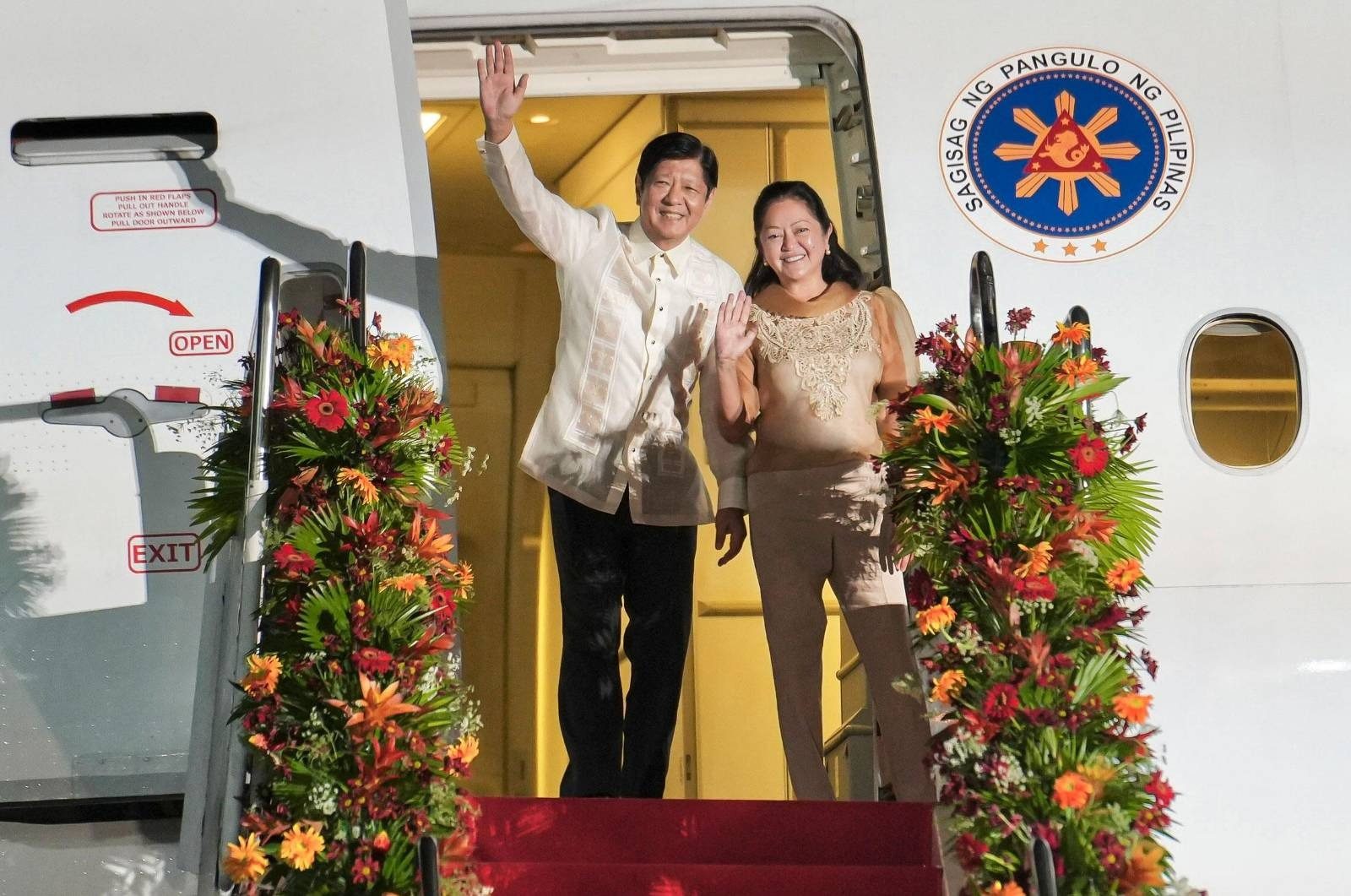SUMMARY
This is AI generated summarization, which may have errors. For context, always refer to the full article.

HAWAII, USA – President Ferdinand Marcos Jr. landed in the island-state of Hawaii on Saturday, November 18 (November 19, Philippine time), marking the return of a man who used to be exiled there three decades ago.
Marcos was scheduled to meet with the Filipino community on Saturday night after touchdown at the Daniel K. Inouye International Airport in Honolulu.
While Hawaii is known to be a solid bailiwick of the Marcos family, a “vocal minority,” as critics call it, mobilized outside the Hawaii Convention Center to greet the President with protests.
“No Aloha for Marcos,” their demonstration battlecry says.
‘Not full circle’
In San Francisco, Marcos told reporters he didn’t see the visit as a “full circle” moment despite the rich context attached to the trip.
Hawaii offered the Marcos family a sanctuary after the 1986 People Power Revolution booted them out of Malacañang.
It was where patriarch Marcos Sr. succumbed to illness in 1989, and the rest of the Marcos family stayed there until 1991, when the Philippine government under Corazon Aquino’s rule allowed them to return to the country and face the cases against them.
Since then, Marcos has never set foot in Hawaii until this weekend due to the risk of arrest after a court there cited them in contempt for failing to pay billions of dollars in reparations to Martial Law victims.
The presidency, however, gave him diplomatic immunity, allowing him to visit the United States three times in the last year.
“It’s just I really want to go and see my old friends. These were the people who looked after us after 1986. These were the people who fed us. They brought us clothes,” Marcos Jr. said ahead of the visit.
When asked in California whether he has forgiven people behind his father’s ouster, he said he didn’t have to.
“I never blamed them… that’s how things happen,” he said. “I don’t take things personally. They don’t need my forgiveness. If they want it, I will give it to them.”
“I will fight for my beliefs. They fought for their beliefs. And that was the result. It’s life. That’s what life… that’s what it’s about,” he added.
‘Crimes not forgotten’
While anti-Marcos people lost by a huge margin to pro-administration forces in last year’s polls in Hawaii, the small opposition in the Filipino diaspora insists the dictator’s son is not welcome on the island.
“We cannot simply let the Marcos family think that they can set foot here in Hawaii, thinking all is forgotten,” said Victor Limon, member of the Hawaii Filipinos for Truth, Justice, and Democracy.
“Hawaii is not just where the Marcoses were exiled after they lost power in the Philippines, it is where truth prevailed. We will honor that by letting Bongbong Marcos know that we remember,” he added.

Human rights group estimate that under Marcos Sr.’s martial rule in the 1970s, 70,000 people were imprisoned, 34,000 were tortured, and 3,240 were killed.
The tyrant also kickstarted during that period the labor export initiative that is now deeply ingrained in the Philippines’ development policy.
“Even abroad, working Filipino families find little relief,” Anakbayan Hawaii said in a statement. “How many of us are actually suffering because we are living as borrowed laborers and second-class residents?”
Loyalists, however, are just ready to move on from that chapter in Philippine history.
“Let’s take that road to peace and unity rather than divisiveness. I am tired of the divisiveness among the Filipino community,” Oahu Filipino Community Council president Raymond Sebastian, a pro-Marcos supporter who participated in his 2022 campaign, told Rappler.
Returning Sunday
Hawaii is Marcos’ last US stopover before he flies home on Sunday, November 19, in Honolulu. He is expected to arrive Monday evening in Manila, which is ahead by 18 hours.
Before that, he spent four days in San Francisco, California for the 30th Asia Pacific Economic Cooperation (APEC) Summit, and had an overnight stay in Los Angeles for a meet-and-greet event with the Filipino community.
Marcos is scheduled to make a rare visit on Sunday morning to the US Indo-Pacific Command, one of the US military’s combatant commands that covers the vast Indo-Pacific, including waters and airspace adjacent to the Philippines. – Rappler.com
Add a comment
How does this make you feel?
There are no comments yet. Add your comment to start the conversation.